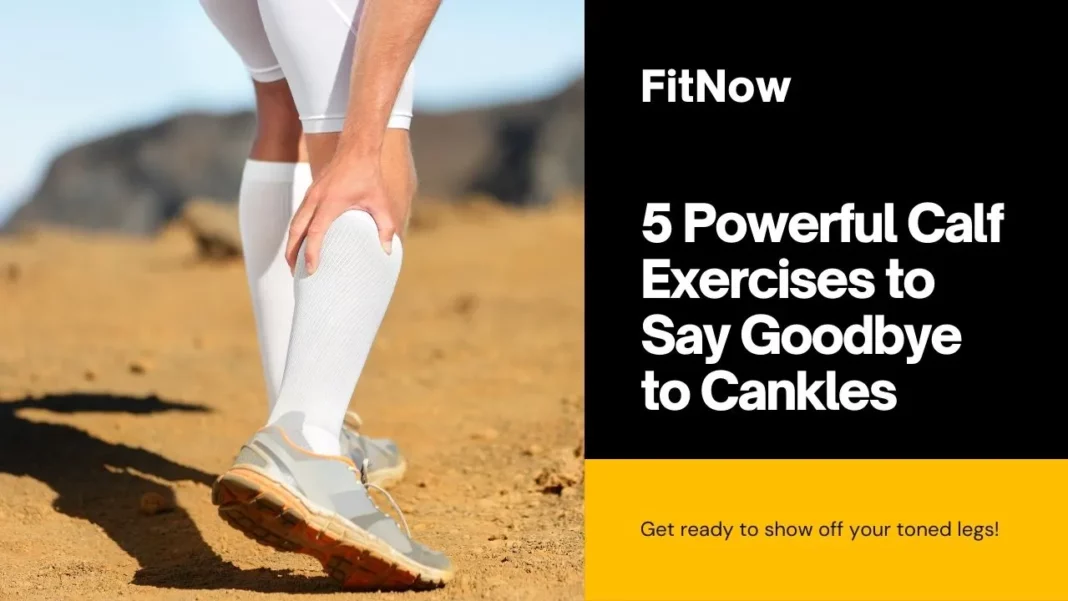How to Get Rid of Cankles: 5 Best Calf Exercises
Are you looking for ways to get rid of cankles and build stronger, toned calves? The journey to achieving sleeker lower legs begins with targeted exercises. This guide introduces five potent calf exercises that are designed to specifically target and strengthen the calf muscles. By incorporating these exercises into your routine, you’ll be able to transform the appearance of your lower legs and boost your confidence.
In this article, we will explore a collection of powerful calf exercises that are tailored to reduce cankles, bolster calf strength, and enhance overall lower body fitness. These exercises range from standing and seated calf raises to dynamic jump rope routines and specialized stretching techniques. Each exercise offers a unique pathway to toning your calf muscles and addressing the stubborn issue of cankles.
Join us on this journey as we explore simple yet effective exercises aimed at chiseling and defining your calves. By embracing these techniques, you’ll witness the remarkable impact they can have on your lower leg appearance and confidence. Let’s dive into this empowering fitness regimen and say goodbye to cankles for good!
What are Calf Exercises
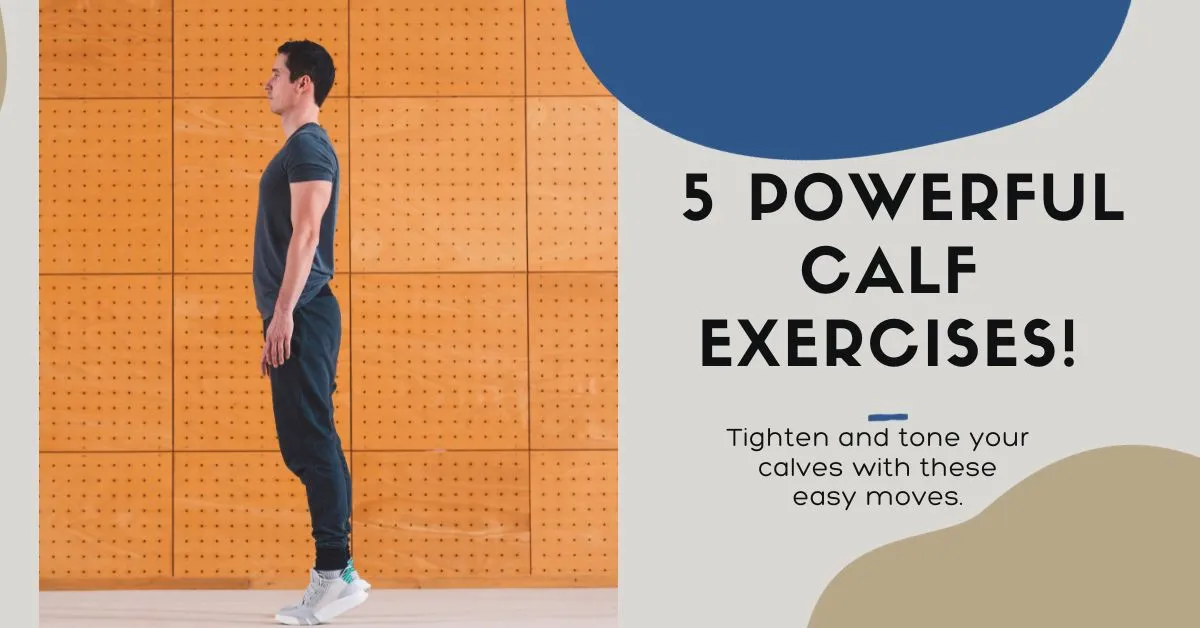
Calf exercises are specific movements that focus on strengthening the muscles in the lower part of your leg. These exercises target muscles like the gastrocnemius and soleus, which play a crucial role in ankle movement and stability.
They include activities like calf raises, jumping exercises, stretches, running, and plyometrics. These exercises help improve the strength, endurance, and flexibility of your calf muscles, aiding in injury prevention, enhancing athletic performance, and supporting overall lower body strength.
Importance of calf exercises
Cankles, a colloquial term combining “calf” and “ankles,” refer to a lack of definition between the calf and ankle due to excess fat or lack of muscle tone in that area. Understanding cankles involves exploring why they occur, their impact, and the significance of targeted exercises to address them.
Causes of Cankles: Cankles commonly stem from genetics, where some individuals naturally store more fat or retain fluid in their lower legs. Additionally, factors like excess weight, poor circulation, and a sedentary lifestyle might contribute to this condition. It’s important to understand that while genetics play a role, lifestyle changes and exercises can help.
Impact on Self-Esteem and Health: Cankles can affect one’s confidence and self-image, potentially leading to feelings of self-consciousness. Beyond aesthetics, having cankles might also signal health concerns related to circulation and overall fitness. Targeted exercises not only help in toning but also contribute to improved health markers.
Importance of Targeted Exercises: Focused calf exercises play a pivotal role in reducing cankles by toning the calf muscles and reducing excess fat in the area. These exercises increase muscle definition and improve overall lower leg strength and appearance. They are essential components in addressing cankles effectively.
Understanding Cankles
About Causes Cankles
Cankles, a term blending “calf” and “ankles,” typically result from various factors. While genetics do play a role, they’re not the sole cause. Several reasons contribute to the development of cankles:
- Genetics: Some individuals inherit a genetic predisposition where they store more fat or retain fluid around the lower legs, leading to a lack of distinction between the calf and ankle.
- Weight and Lifestyle: Excess weight or obesity can lead to the accumulation of fat deposits around the ankles. A sedentary lifestyle, lacking adequate physical activity, might also contribute to poor muscle tone in the calf area.
- Fluid Retention: Conditions like edema, often associated with pregnancy or certain health issues, can cause fluid retention in the lower extremities, contributing to cankles.
Impact on Self-Esteem and Health
The presence of cankles can significantly impact both mental well-being and physical health:
- Self-Esteem: Individuals with cankles may feel self-conscious or dissatisfied with their appearance, affecting their confidence and self-image. This can lead to psychological distress and discomfort in social situations.
- Health Implications: Cankles may also hint at underlying health issues such as poor circulation, lymphatic problems, or excess body weight. Addressing cankles through targeted exercises not only improves aesthetics but can also benefit overall health.
Importance of Targeted Exercises
Targeted calf exercises play a crucial role in addressing cankles effectively:
- Muscle Toning: Specific exercises targeting the calf muscles help in toning and strengthening this area. These exercises focus on building muscle definition, which can reduce the appearance of cankles.
- Improving Circulation: Engaging in calf exercises promotes better blood flow and circulation in the lower legs. This can help reduce fluid retention and alleviate some of the causes contributing to cankles.
- Enhancing Lower Body Strength: Alongside aesthetics, these exercises contribute to overall lower body strength, stability, and mobility, which are essential for everyday movements.
By understanding the causes, impact, and significance of targeted exercises for cankles, individuals can take proactive steps to address this concern through suitable lifestyle changes and exercise routines.
5 – Effective Calf Exercises
Exercise 1: Standing Calf Raises
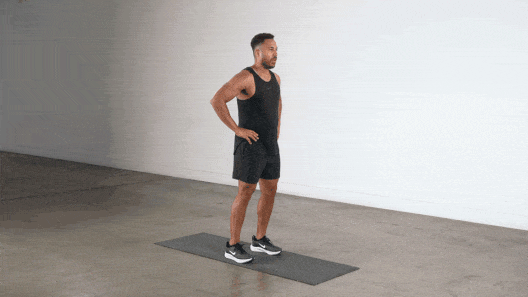
Step-by-Step Guide to Performing the Exercise:
- Starting Position: Stand upright with your feet hip-width apart. You may place your hands on a wall or hold onto a sturdy object for balance.
- Raising Phase: Slowly lift your heels off the ground, rising onto the balls of your feet.
- Peak Contraction: Pause briefly at the top of the movement, ensuring you feel the contraction in your calf muscles.
- Lowering Phase: Slowly lower your heels back to the starting position, allowing your heels to descend below the level of your toes for a full stretch.
- Repetition: Repeat the movement for the desired number of repetitions, aiming for a controlled motion throughout the exercise.
Variations for Different Fitness Levels:
- Beginners: Start with bodyweight standing calf raises. Hold onto a support for balance if needed.
- Intermediate: Add resistance by holding dumbbells in your hands while performing the calf raises.
- Advanced: Use a calf raise machine at the gym or perform single-leg calf raises for increased intensity.
Benefits and Muscle Groups Targeted:
- Muscle Groups Targeted: Standing calf raises primarily target the gastrocnemius and to some extent, the soleus muscles in the calves.
- Benefits:
- Strengthens and tones the calf muscles.
- Improves ankle stability and balance.
- Enhances overall lower leg strength, essential for various daily activities and sports.
- Helps in defining the calves, reducing the appearance of cankles.
By following these steps and exploring variations, individuals can tailor standing calf raises to their fitness levels, reaping the benefits of stronger, more toned calf muscles as part of their routine aimed at addressing cankles.
Exercise 2: Seated Calf Raises
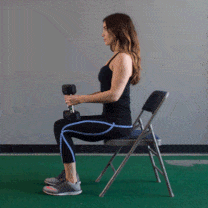
Technique and Proper Form:
- Setup: Sit on a chair or a dedicated seated calf raise machine with your feet flat on the floor.
- Positioning: Place a weight (dumbbell, barbell, or use the machine’s resistance) on your knees or thighs for resistance.
- Lifting Phase: Push through the balls of your feet, raising your heels as high as possible by contracting your calf muscles.
- Pause: Hold the top position for a moment, feeling the contraction in your calf muscles.
- Lowering Phase: Slowly lower your heels back down below the level of your toes to complete one repetition.
- Repetition: Perform the exercise for the desired number of reps with controlled movements.
Equipment Needed (If Any):
- Basic Equipment: A sturdy chair or a dedicated seated calf raise machine.
- Resistance: You can use free weights like dumbbells or barbells placed on your knees or a machine with adjustable resistance for added weight.
Advantages and Variations:
- Advantages:
- Isolates and targets the calf muscles effectively, especially the soleus.
- Allows for controlled and focused movement, reducing reliance on other muscles.
- Can be adjusted to various resistance levels for progressive overload.
- Convenient for those with difficulty balancing during standing exercises.
- Variations:
- Different Foot Positions: Alter foot placement (toes pointed in, out, or straight) to target different areas of the calf muscles.
- Unilateral Raises: Perform the exercise one leg at a time to focus more on each calf individually.
- Machine Variations: If available, use a seated calf raise machine, which often offers different grip options and adjustable resistance.
Seated calf raises, with their focused targeting and adjustable resistance, prove beneficial for strengthening and defining the calf muscles. The exercise can be tailored using variations to suit individual needs and fitness levels.
Exercise 3: Jump Rope
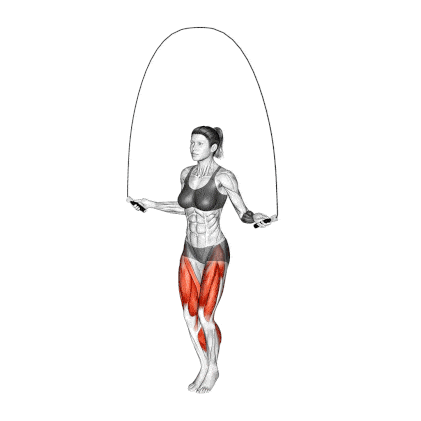
Explanation of Jump Rope Benefits for Calves:
- Calf Engagement: Jumping rope engages the calf muscles significantly with each jump, as they work to lift the body off the ground.
- Muscle Endurance: Continuous jumping develops calf muscle endurance due to the repetitive nature of the exercise.
- Toning and Definition: Jump rope workouts contribute to toning and defining the calf muscles over time, reducing excess fat, and improving muscle definition.
- Improved Coordination: It enhances lower body coordination and timing, benefiting overall athleticism.
Jump Rope Routines for Calf Improvement:
- Basic Jump Rope: Start with regular two-foot jumps for a set duration or number of repetitions.
- Single-Leg Jumps: Alternate jumping on each leg individually to further engage and challenge the calf muscles.
- High-Intensity Intervals: Incorporate intervals of faster skipping or double unders (where the rope passes under your feet twice in one jump) to intensify the workout and target calf strength.
Tips for Beginners and Safety Measures:
- Proper Rope Length: Ensure the jump rope is adjusted to an appropriate length, where the handles reach your armpits.
- Start Slow: Begin with shorter sessions and gradually increase duration and intensity to avoid strain.
- Land Softly: Land on the balls of your feet, keeping your knees slightly bent to reduce impact on joints.
- Use Proper Footwear: Wear supportive and cushioned footwear to absorb impact and prevent injury.
Safety Measures:
- Check the jumping surface for any hazards.
- Be mindful of space and surroundings to avoid tripping.
- Incorporate rest days into your routine to prevent overuse injuries.
Jump rope exercises offer numerous benefits for calf muscles, including toning, endurance, and improved coordination. By following proper techniques, beginners can enjoy these advantages while minimizing the risk of injury or strain.
Exercise 4: Calf Stretching
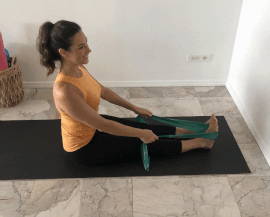
Importance of Stretching for Calf Muscles:
- Flexibility Improvement: Calf stretches enhance flexibility, allowing for a wider range of motion in the ankle joint and calf muscles.
- Injury Prevention: Stretching reduces the risk of calf strains or injuries during physical activities by improving muscle elasticity.
- Relief from Tightness: Regular stretching helps alleviate calf muscle tightness, often caused by prolonged sitting or intense physical activity.
Various Calf Stretches and Their Execution:
- Wall Calf Stretch:
- Stand facing a wall, place both hands on the wall at shoulder height.
- Step one foot back, keeping it straight, and press the heel into the ground.
- Lean forward while keeping your back leg straight until you feel a stretch in the calf. Hold for 30 seconds and switch legs.
- Seated Calf Stretch:
- Sit on the floor with legs extended.
- Loop a towel or resistance band around the ball of one foot and gently pull it towards you until you feel a stretch in the calf. Hold for 30 seconds and switch legs.
- Standing Calf Stretch:
- Stand facing a wall with one foot in front of the other.
- Lean forward with both hands against the wall, keeping the back heel on the ground, until you feel a stretch in the calf. Hold for 30 seconds and switch legs.
Incorporating Stretching into a Routine:
- Pre-exercise: Perform dynamic calf stretches (like ankle circles or leg swings) before workouts to prepare the muscles for activity.
- Post-exercise: Follow workouts with static calf stretches to aid muscle recovery and prevent tightness.
- Daily Practice: Incorporate calf stretches into your daily routine, especially if you spend long periods sitting or standing.
By incorporating different calf stretches into a routine, individuals can improve flexibility, reduce the risk of injury, and relieve muscle tightness in the calf area, enhancing overall lower leg health.
Exercise 5: Box Jumps
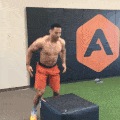
About the Box Jumps Exercise:
- Setup: Stand facing a sturdy box or platform of an appropriate height.
- Execution:
- Begin in a semi-squat position, then explosively jump onto the box using both feet.
- Land softly on the box with both feet fully on the surface, ensuring a stable landing.
- Step or jump back down to the starting position, maintaining control and balance.
- Repetitions: Perform the desired number of repetitions or follow a set duration for the exercise.
Safety Precautions and Beginner’s Guidance:
- Start Low: Beginners should begin with a lower box height to practice proper form and gradually increase the height as they become more comfortable and confident.
- Focus on Technique: Prioritize proper landing technique by ensuring a soft landing with knees slightly bent to absorb impact.
- Use a Stable Surface: Ensure the box or platform used is stable, secure, and can support your weight without sliding or tipping.
- Progress Gradually: Increase the height of the box gradually as strength and confidence improve, avoiding overly challenging heights too soon.
Benefits for Toning Calves and Improving Strength:
- Calf Muscle Engagement: Box jumps engage the calf muscles significantly with each explosive jump, aiding in muscle development and definition.
- Strength Development: The exercise targets not only the calves but also the quadriceps, hamstrings, and glutes, contributing to overall lower body strength.
- Power and Explosiveness: Box jumps help enhance lower body power, agility, and explosiveness, crucial for various athletic activities.
- Cardiovascular Benefits: Incorporating box jumps into a workout routine can provide cardiovascular benefits, elevating heart rate and burning calories.
Box jumps, when performed with proper technique and safety measures, offer a challenging yet effective way to target calf muscles, improve lower body strength, and enhance overall athleticism.
Tips for Success
Here are some valuable tips for success when engaging in exercises aimed at addressing cankles and improving calf strength:
- Consistency is Key: Regularity in performing calf exercises is crucial for noticeable improvements. Aim for a consistent workout routine, gradually increasing intensity and repetitions over time.
- Patience and Persistence: Results may take time to become visible. Be patient and persistent in your efforts, understanding that progress comes with dedication and continuous practice.
- Balanced Workout Routine: Incorporate a variety of calf exercises into your routine to target different muscle fibers and prevent plateauing. Combine strength training, stretching, and cardio to optimize results.
- Proper Form Matters: Focus on correct technique during exercises to maximize their effectiveness and prevent injury. Quality reps are more important than quantity.
- Listen to Your Body: Pay attention to your body’s signals. If you experience pain or discomfort beyond normal muscle fatigue, it’s essential to rest or modify exercises to prevent injury.
- Gradual Progression: Start with exercises suitable for your fitness level and gradually increase intensity, repetitions, or resistance as your strength and endurance improve.
- Healthy Lifestyle: A balanced diet and sufficient hydration complement your exercise routine. Consuming nutrient-dense foods and staying hydrated aids muscle recovery and overall fitness.
- Recovery is Crucial: Allow your muscles time to recover between workouts. Adequate rest and recovery contribute to muscle growth and prevent overuse injuries.
- Seek Professional Guidance: If unsure about exercise techniques, consider consulting a fitness professional or personal trainer to ensure proper form and tailor exercises to your specific needs.
- Celebrate Progress: Celebrate small milestones and improvements along the way. Recognizing progress, whether it’s increased endurance or improved muscle tone, can help maintain motivation.
By following these tips and integrating them into your fitness journey, you’ll create a supportive environment for achieving your goals of reducing cankles and enhancing calf strength effectively and sustainably.
Conclusion
Addressing cankles and enhancing calf strength involves a multifaceted approach encompassing targeted exercises, consistency, and a mindful approach to fitness. Understanding the causes of cankles, the impact on self-esteem and health, and the importance of exercises targeted at calf muscles lays the foundation for effective change.
By incorporating exercises like standing and seated calf raises, jump rope routines, calf stretching, and box jumps into your routine, you engage and strengthen the calf muscles while improving flexibility and endurance. Each exercise offers unique benefits, from toning calf muscles to improving overall lower body strength and agility.
Moreover, ensuring safety measures, focusing on proper techniques, and gradually progressing through exercises are essential elements for success. Balancing workouts with adequate rest, a healthy diet, and listening to your body’s signals contribute significantly to achieving desired results while preventing injury.
Thank you for joining us on this fitness journey! We hope you found our blog insightful and inspiring. Our aim is to provide you with valuable information, expert advice, and motivational content to support you in your wellness endeavors.
Related Post :-
- How To Do Wall Pushups
- Arnold Schwarzenegger’s Back Workout
- Hand Size Demystified
- CrossFit Unleashed
- Barbell Lunges
- Forearm Fortitude
- Kettlebell Circuit
- Power of Personal Trainers
- Down Pull-Ups
- Plyo Push-Ups

Meet Pradeep Singh, your go-to guide for all things fitness, health, and motivation. With over 7 years in the field, Pradeep brings a blend of expertise and real-world experience to his writing. From workout tips to healthy living insights, he simplifies complex topics, making fitness accessible for everyone. His authentic approach and genuine passion aim to inspire and support your wellness journey. Get ready to embark on a path to a healthier lifestyle with Pradeep as your trusted companion and motivator.












